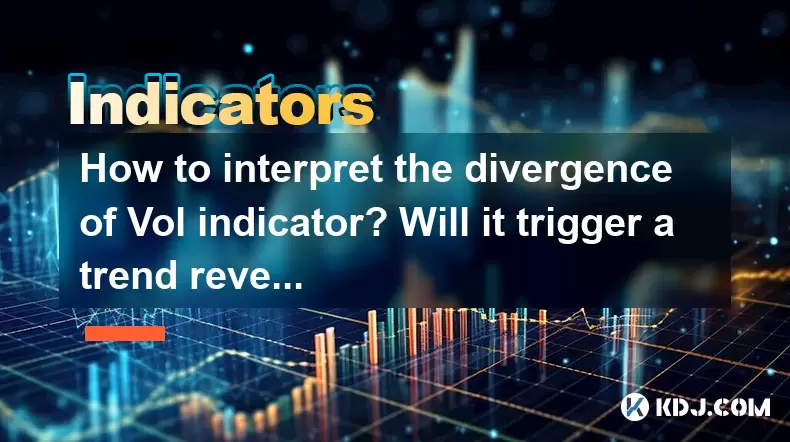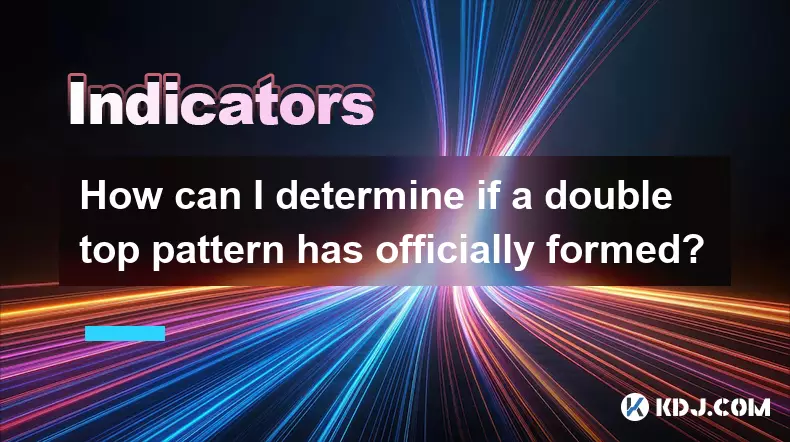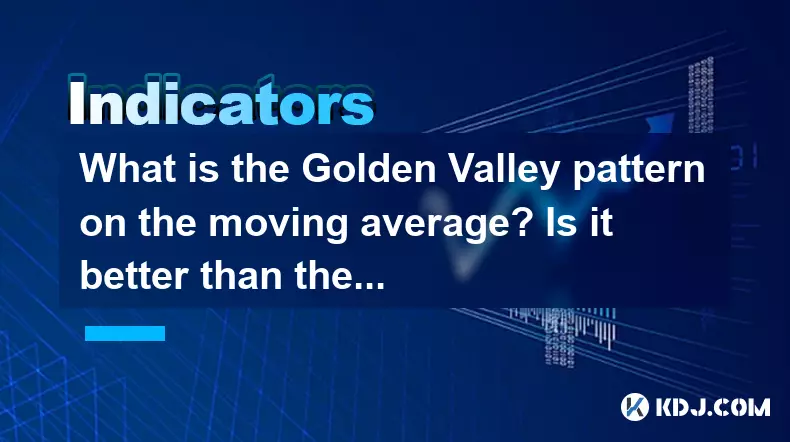-
 bitcoin
bitcoin $112195.049338 USD
2.42% -
 ethereum
ethereum $4124.915858 USD
2.81% -
 tether
tether $1.000570 USD
0.02% -
 xrp
xrp $2.861568 USD
2.25% -
 bnb
bnb $1000.346670 USD
3.04% -
 solana
solana $209.070819 USD
3.38% -
 usd-coin
usd-coin $0.999870 USD
0.02% -
 dogecoin
dogecoin $0.235379 USD
2.65% -
 tron
tron $0.335681 USD
-0.20% -
 cardano
cardano $0.803501 USD
3.38% -
 hyperliquid
hyperliquid $47.120881 USD
3.56% -
 chainlink
chainlink $21.501300 USD
3.44% -
 ethena-usde
ethena-usde $1.000571 USD
0.02% -
 avalanche
avalanche $29.793378 USD
3.62% -
 stellar
stellar $0.366964 USD
2.42%
How to interpret the divergence of Vol indicator? Will it trigger a trend reversal?
Volume divergence in crypto trading signals potential trend reversals; traders should confirm with other indicators and consider market context for reliable signals.
May 22, 2025 at 01:28 am

Understanding the divergence of the Volume (Vol) indicator and its potential to trigger a trend reversal is crucial for traders in the cryptocurrency market. Divergence occurs when the price of an asset moves in the opposite direction of a technical indicator, such as volume. In this context, we will delve into how to interpret volume divergence and assess its implications for trend reversals.
What is Volume Divergence?
Volume divergence is a phenomenon where the price of a cryptocurrency either increases or decreases while the trading volume does not confirm this movement. There are two main types of volume divergence: bullish divergence and bearish divergence.
- Bullish divergence occurs when the price of a cryptocurrency is falling, but the volume is increasing. This suggests that the selling pressure is weakening, and a potential upward reversal might be on the horizon.
- Bearish divergence happens when the price is rising, but the volume is decreasing. This indicates that the buying interest is waning, and a downward reversal could be imminent.
How to Identify Volume Divergence
To effectively identify volume divergence, traders should follow these steps:
- Observe the Price Chart: Look at the price movement of the cryptocurrency over a specific period. Note whether the price is trending upwards or downwards.
- Analyze the Volume Indicator: Below the price chart, the volume indicator will show bars that represent the trading volume for each period. Compare the volume bars to the price movement.
- Spot the Divergence: If the price is moving in one direction and the volume is moving in the opposite direction, this is a potential divergence. For instance, if the price is increasing while volume is decreasing, this could be a bearish divergence.
Does Volume Divergence Always Trigger a Trend Reversal?
While volume divergence can be a powerful signal, it does not guarantee a trend reversal. Several factors need to be considered:
- Confirmation from Other Indicators: Traders should look for confirmation from other technical indicators, such as the Relative Strength Index (RSI) or Moving Averages, to increase the reliability of the divergence signal.
- Market Context: The broader market context and news events can influence whether a divergence will lead to a reversal. For example, if there is significant positive news about a cryptocurrency, a bearish divergence might not lead to a downward reversal.
- Time Frame: The time frame being analyzed can impact the significance of the divergence. Divergences on longer time frames, such as daily or weekly charts, tend to be more reliable than those on shorter time frames.
Practical Example of Volume Divergence
Let's consider a practical example to illustrate how volume divergence might play out in the cryptocurrency market:
- Scenario: Bitcoin (BTC) has been in an uptrend for several weeks. The price continues to rise, but the volume starts to decline. This is a potential bearish divergence.
- Observation: On the daily chart, the price of BTC reaches new highs, but the volume bars are progressively smaller.
- Analysis: This indicates that fewer traders are participating in the price increase, suggesting that the upward momentum might be running out of steam.
- Action: A trader might decide to take profits or set a tighter stop-loss in anticipation of a possible downward reversal.
How to Trade Based on Volume Divergence
Trading based on volume divergence requires a strategic approach. Here are some steps to consider:
- Confirm the Divergence: Ensure that the divergence is clear and not a result of short-term fluctuations. Use multiple time frames to validate the signal.
- Wait for a Trigger: Look for a price action that confirms the divergence, such as a candlestick pattern (e.g., a bearish engulfing pattern for bearish divergence) or a break of a key support/resistance level.
- Set Entry and Exit Points: Once the divergence is confirmed and triggered, set entry points based on the price action. For example, enter a short position after a bearish divergence is confirmed. Set stop-losses and take-profit levels to manage risk.
- Monitor and Adjust: Continuously monitor the trade and be prepared to adjust your strategy based on new developments in the market.
Potential Pitfalls of Relying on Volume Divergence
While volume divergence can be a valuable tool, it is not without its pitfalls:
- False Signals: Not all divergences lead to trend reversals. False signals can occur, especially in highly volatile markets like cryptocurrency.
- Overreliance: Relying solely on volume divergence without considering other factors can lead to poor trading decisions.
- Lag: Volume data can sometimes lag behind price movements, which may result in delayed signals.
Frequently Asked Questions
Q: Can volume divergence be used in conjunction with other indicators?A: Yes, volume divergence is often used in conjunction with other technical indicators such as RSI, MACD, or Moving Averages to increase the reliability of trading signals. Combining multiple indicators can help traders make more informed decisions.
Q: How can I improve my ability to spot volume divergence?A: Improving your ability to spot volume divergence involves practice and experience. Regularly analyzing charts, using demo accounts to practice trading, and staying updated with educational resources can enhance your skills.
Q: Is volume divergence more effective on certain cryptocurrencies?A: Volume divergence can be effective across various cryptocurrencies, but it may be more reliable on assets with higher liquidity and trading volume, such as Bitcoin and Ethereum. Lower liquidity assets might exhibit more erratic volume patterns, making divergence signals less reliable.
Q: Can volume divergence be used for both short-term and long-term trading?A: Yes, volume divergence can be used for both short-term and long-term trading. However, the reliability of the signal can vary depending on the time frame. Divergences on longer time frames tend to be more significant and reliable than those on shorter time frames.
Disclaimer:info@kdj.com
The information provided is not trading advice. kdj.com does not assume any responsibility for any investments made based on the information provided in this article. Cryptocurrencies are highly volatile and it is highly recommended that you invest with caution after thorough research!
If you believe that the content used on this website infringes your copyright, please contact us immediately (info@kdj.com) and we will delete it promptly.
- News, September 28th, Headlines: Crypto's Wild Ride
- 2025-09-29 20:45:13
- Altcoins, Investors, and Potential Gains: Riding the 2025 Crypto Wave
- 2025-09-29 20:45:13
- Citi Token Services: Revolutionizing Cross-Border Payments and Liquidity Management
- 2025-09-29 20:50:01
- JYAI Token Gears Up for Launch: LCX Exchange Listing Imminent
- 2025-09-29 20:50:01
- Prenetics, Bitcoin Holdings, and Corporate Bitcoin: A New Era?
- 2025-09-29 20:25:11
- Swift, Altcoins, and Shifting Sands: Diving into Crypto's Latest Details
- 2025-09-29 20:25:11
Related knowledge

What is a tower bottom candlestick pattern? Does it have a high success rate?
Sep 22,2025 at 07:18am
Tower Bottom Candlestick Pattern Explained1. The tower bottom candlestick pattern is a reversal formation that typically appears at the end of a downt...

What is a black hole pattern in the MACD indicator? Is it a cause for concern?
Sep 21,2025 at 06:54pm
Bitcoin's Role in Decentralized Finance1. Bitcoin remains the cornerstone of decentralized finance, serving as a benchmark for value and security acro...

How can I use the psychological line (PSY) to determine market sentiment?
Sep 17,2025 at 02:19pm
Understanding the Psychological Line (PSY) in Cryptocurrency TradingThe Psychological Line, commonly referred to as PSY, is a momentum oscillator used...

How can I determine if a double top pattern has officially formed?
Sep 21,2025 at 03:18am
Understanding the Structure of a Double Top Pattern1. A double top pattern consists of two distinct peaks that reach approximately the same price leve...

What is the Golden Valley pattern on the moving average? Is it better than the Silver Valley pattern?
Sep 21,2025 at 02:54pm
Understanding the Golden Valley Pattern in Moving Averages1. The Golden Valley pattern is a technical formation observed in cryptocurrency price chart...

What does a death cross of the RSI in the strong zone (above 50) mean?
Sep 17,2025 at 10:54pm
Understanding the Death Cross in RSI Context1. The term 'death cross' is traditionally associated with moving averages, where a short-term average cro...

What is a tower bottom candlestick pattern? Does it have a high success rate?
Sep 22,2025 at 07:18am
Tower Bottom Candlestick Pattern Explained1. The tower bottom candlestick pattern is a reversal formation that typically appears at the end of a downt...

What is a black hole pattern in the MACD indicator? Is it a cause for concern?
Sep 21,2025 at 06:54pm
Bitcoin's Role in Decentralized Finance1. Bitcoin remains the cornerstone of decentralized finance, serving as a benchmark for value and security acro...

How can I use the psychological line (PSY) to determine market sentiment?
Sep 17,2025 at 02:19pm
Understanding the Psychological Line (PSY) in Cryptocurrency TradingThe Psychological Line, commonly referred to as PSY, is a momentum oscillator used...

How can I determine if a double top pattern has officially formed?
Sep 21,2025 at 03:18am
Understanding the Structure of a Double Top Pattern1. A double top pattern consists of two distinct peaks that reach approximately the same price leve...

What is the Golden Valley pattern on the moving average? Is it better than the Silver Valley pattern?
Sep 21,2025 at 02:54pm
Understanding the Golden Valley Pattern in Moving Averages1. The Golden Valley pattern is a technical formation observed in cryptocurrency price chart...

What does a death cross of the RSI in the strong zone (above 50) mean?
Sep 17,2025 at 10:54pm
Understanding the Death Cross in RSI Context1. The term 'death cross' is traditionally associated with moving averages, where a short-term average cro...
See all articles


























![[Pycoin] PI Coin -Shocking Listance of Pycoin?! 'Rebellion' This time ... Pay attention to #paikoin [Pycoin] PI Coin -Shocking Listance of Pycoin?! 'Rebellion' This time ... Pay attention to #paikoin](/uploads/2025/09/29/cryptocurrencies-news/videos/pycoin-pi-coin-shocking-listance-pycoin-rebellion-time-pay-attention-paikoin/68da82f23cec1_image_500_375.webp)















































